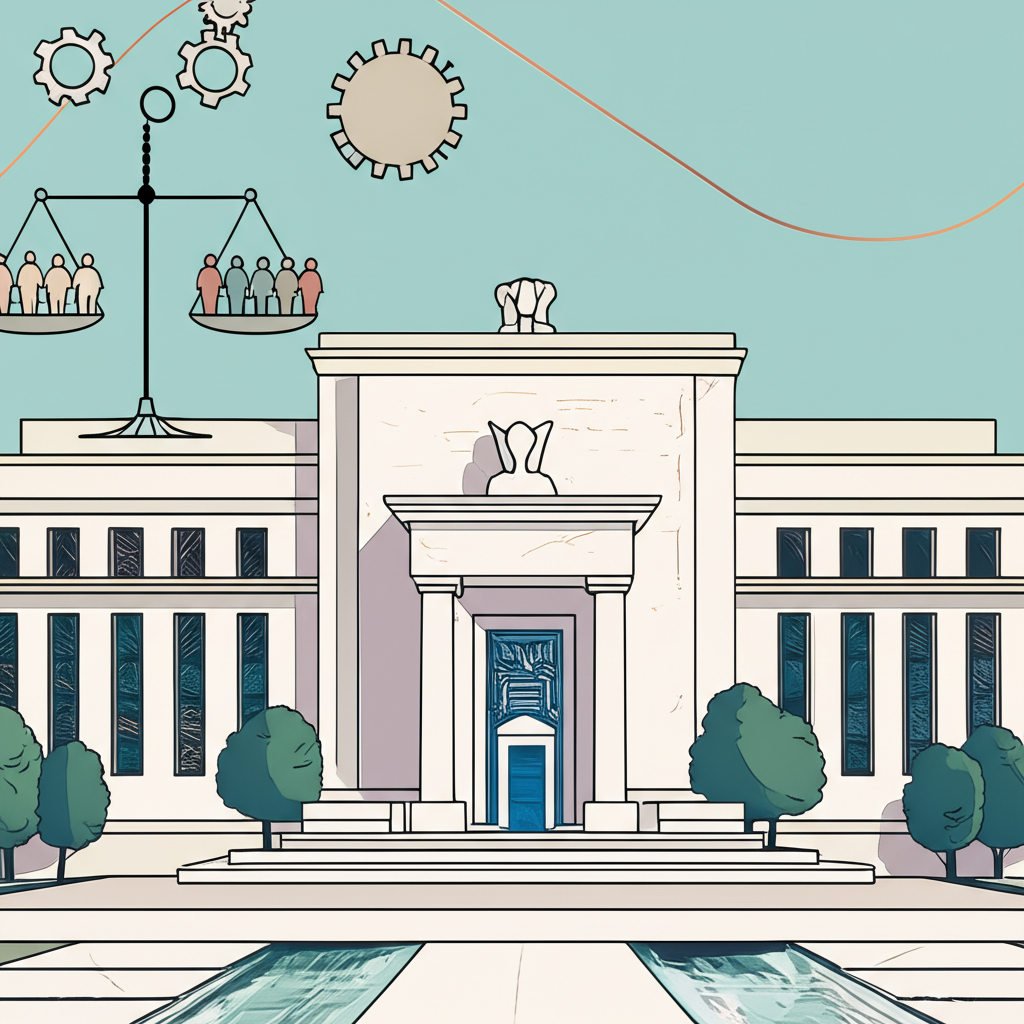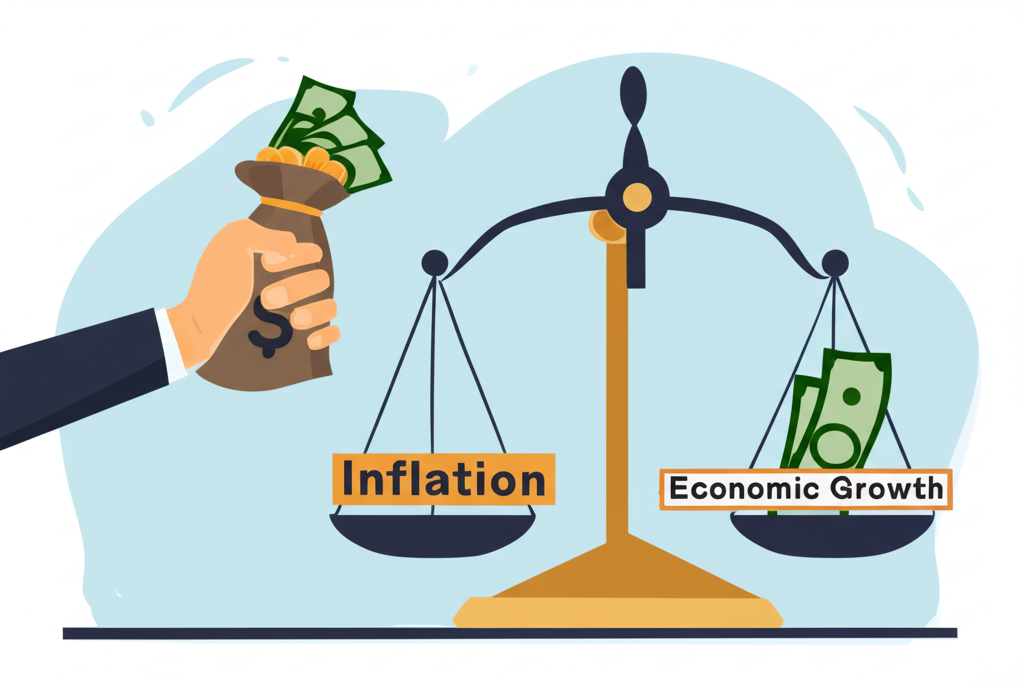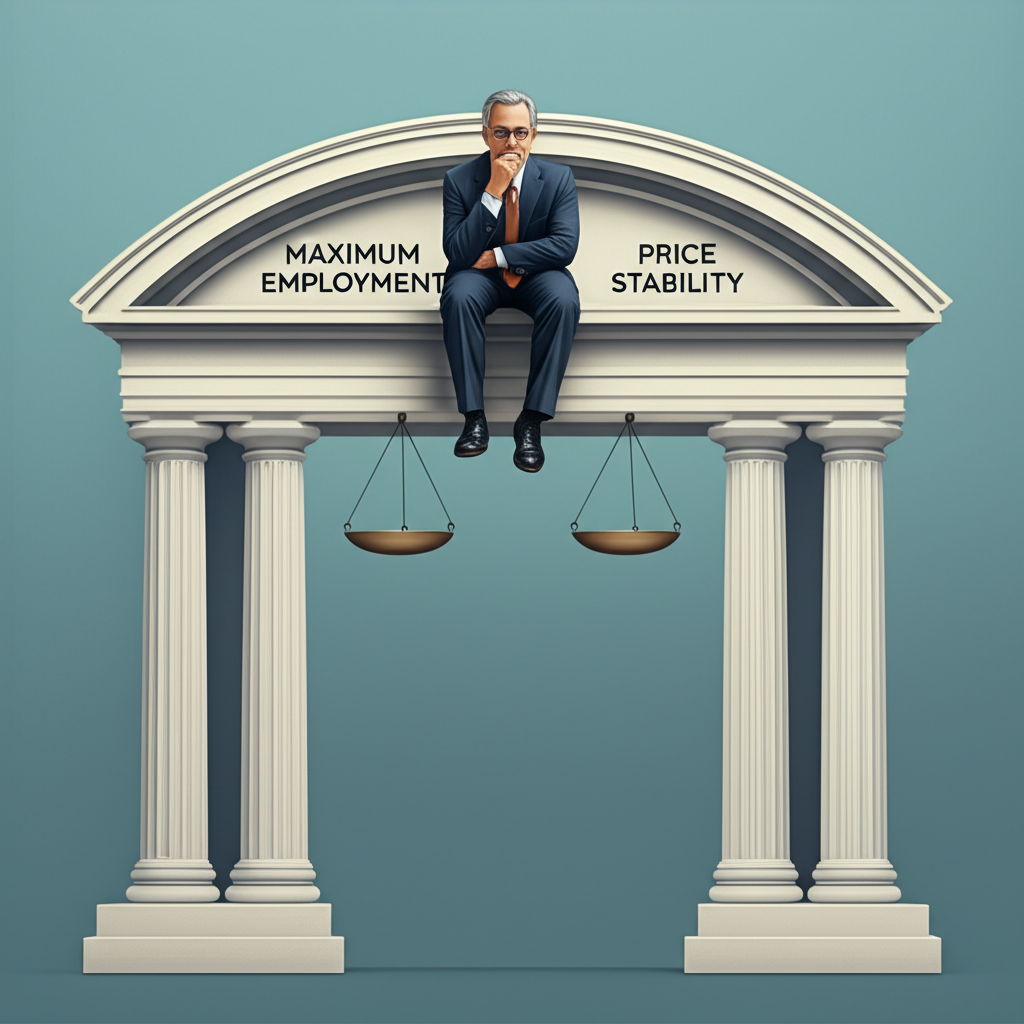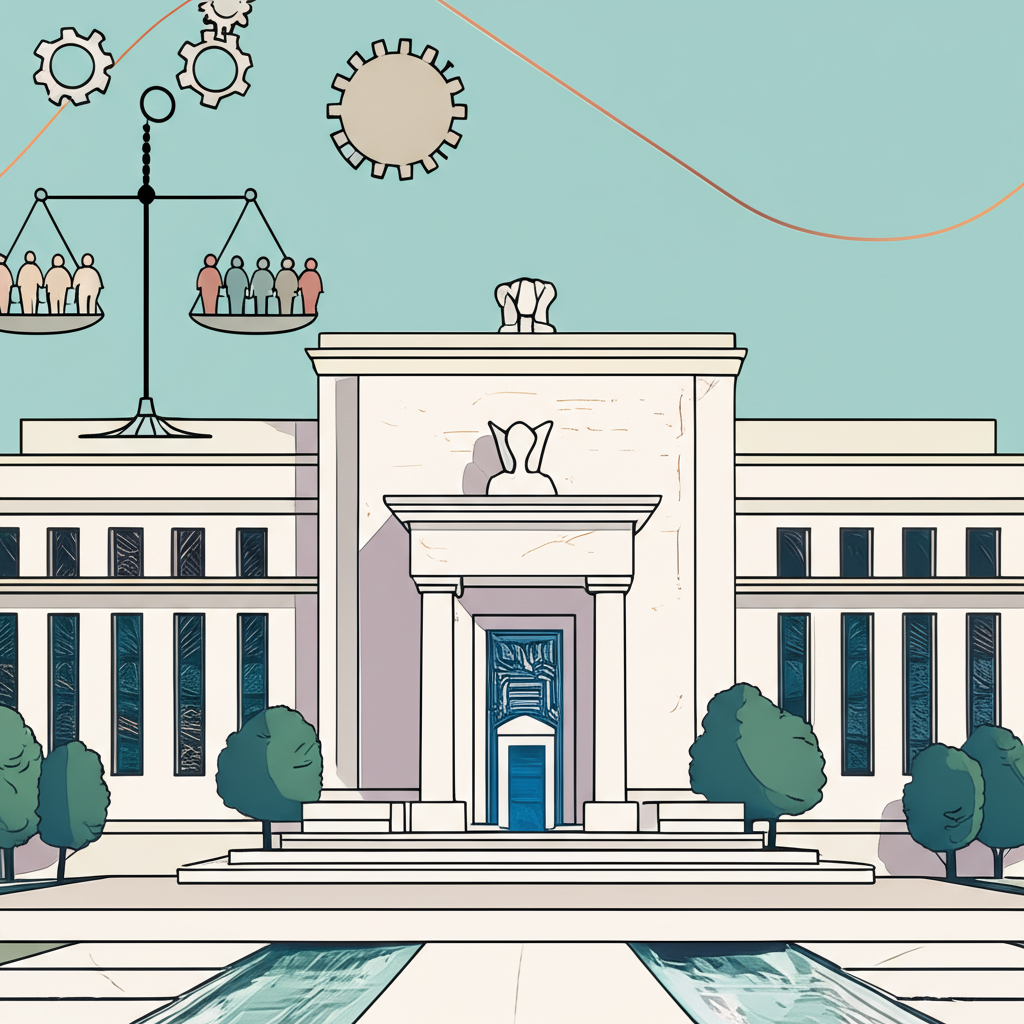Introduction: The Federal Reserve’s Role in Economic Stability

At the heart of the U.S. financial system stands the Federal Reserve—the nation’s central bank—tasked with steering the economy through shifting tides. Since its creation in 1913, the Fed has evolved into a cornerstone of economic governance, wielding influence over interest rates, inflation, and employment. Its most powerful instrument is monetary policy, a strategic framework used to regulate the availability and cost of money. When economic currents run too hot, the Fed doesn’t hesitate to shift gears. Rather than stimulating growth, it may choose to apply the brakes through a deliberate tightening of financial conditions. This restrictive approach isn’t taken lightly; it emerges from careful analysis and a commitment to long-term stability. Understanding when and why the Fed takes such action offers valuable insight into how modern economies are managed—and how everyday Americans feel the ripple effects.
Defining Tight (Restrictive) Monetary Policy

A restrictive monetary policy is the Federal Reserve’s mechanism for cooling down an economy that risks overheating. At its core, this strategy involves reducing the amount of money circulating in the financial system and making credit harder to obtain. By raising borrowing costs and slowing lending activity, the Fed aims to reduce overall demand—whether from consumers spending on homes and cars or businesses investing in expansion. This slowdown is not about halting progress, but about ensuring growth remains sustainable. Unchecked demand can push prices upward rapidly, destabilizing markets and eroding household purchasing power. In contrast, an expansionary policy—used during recessions or sluggish periods—does the opposite: it injects liquidity and lowers rates to spur activity. Restrictive policy, however, acts as a corrective force, reining in excesses before they spiral into broader economic imbalances.
The Fed’s Dual Mandate: Guiding Principles for Policy Decisions

Every policy move the Federal Reserve makes is guided by a mandate set by Congress: to promote maximum sustainable employment and maintain stable prices. These two objectives form the foundation of the central bank’s decision-making. While both are equally important in theory, in practice, their weight can shift depending on the economic climate. During times of rapid inflation, price stability often takes center stage. When prices climb too fast, wages fail to keep up, savings lose value, and businesses struggle to plan for the future. Yet the Fed can’t ignore the labor market. Aggressive tightening could slow hiring or even trigger layoffs, undermining the employment goal. The challenge lies in fine-tuning policy to cool inflation without derailing the job market. This balancing act requires constant monitoring, forward-looking analysis, and, at times, difficult trade-offs. More details on how the Fed interprets and fulfills this mandate are available through its official communications and reports.
Key Economic Conditions Triggering Restrictive Policy
The Federal Reserve doesn’t tighten policy on a whim. Each decision stems from a thorough evaluation of economic data signaling that growth may be outpacing the economy’s capacity, or that inflation is becoming entrenched.
Persistent and Elevated Inflation
The most direct trigger for tightening is sustained high inflation. When prices for everyday goods and services rise rapidly over time, the real value of money declines. This not only hurts consumers but also distorts business planning and investment. The Fed targets a long-term inflation rate of 2%, primarily measured by the Personal Consumption Expenditures (PCE) index. When inflation runs significantly above this benchmark—especially if it shows signs of becoming self-reinforcing—the central bank typically responds with rate hikes. For example, during the inflation surge of the early 2020s, rising costs for housing, food, and energy placed immense pressure on households, prompting the Fed to act decisively. Historical context and detailed inflation metrics are accessible via the Bureau of Labor Statistics Consumer Price Index (CPI), offering a comprehensive view of price trends over time.
An Overheating Economy and Unsustainable Growth
An economy is said to be “overheating” when demand exceeds the nation’s ability to produce goods and services. This often occurs when unemployment falls to historically low levels, wage growth accelerates beyond productivity gains, and consumer spending surges. While strong demand seems positive on the surface, it can strain supply chains, create bottlenecks, and push prices even higher. A dangerous cycle can emerge: workers demand higher pay to keep up with inflation, businesses pass those costs onto consumers, and inflation climbs further—a phenomenon known as a wage-price spiral. To prevent this spiral from taking root, the Fed may step in with tighter policy to gently ease demand and bring growth back to a sustainable level.
Asset Bubbles and Financial Instability Risks
Though less common as a standalone reason, the formation of asset bubbles can also prompt restrictive action. When prices in markets like housing or stocks rise far beyond what fundamentals justify—driven more by speculation than real value—the risk of a sudden crash increases. A burst bubble could destabilize the financial system, wipe out wealth, and trigger a broader economic downturn. In such cases, the Fed may tighten policy not to fight consumer inflation, but to curb speculative excess and safeguard financial stability. This application of monetary policy is subtle and often debated, as it involves preemptive moves based on market sentiment and valuation metrics rather than hard inflation data.
The Fed’s Tools for Implementing Tight Monetary Policy
To carry out a restrictive policy, the Federal Reserve relies on a well-calibrated toolkit designed to influence borrowing costs, liquidity, and overall financial conditions.
Raising the Federal Funds Rate Target
The most visible and impactful tool at the Fed’s disposal is adjusting the target range for the federal funds rate. This rate determines the cost at which banks lend reserves to one another overnight. While the Fed doesn’t set it directly, it steers it through open market operations and interest on reserve balances. When the Fed raises this target, the effect spreads across the economy: mortgage rates, auto loans, credit card APRs, and business financing all tend to rise. Higher borrowing costs naturally discourage spending and investment, helping to slow down economic momentum. Because rate changes are announced at Federal Open Market Committee (FOMC) meetings, they also serve as powerful signals of the Fed’s policy direction.
Quantitative Tightening (Balance Sheet Reduction)
Quantitative tightening (QT) emerged as a key policy lever after the financial crisis and pandemic-era stimulus. Unlike rate hikes, which affect the price of money, QT affects the quantity. It involves allowing the Fed’s holdings of Treasury securities and mortgage-backed securities to mature without reinvesting the proceeds. This gradual runoff reduces the amount of reserves in the banking system, effectively draining liquidity. While less immediate than rate hikes, QT exerts upward pressure on long-term interest rates and reinforces the tightening cycle over time. The process is typically implemented slowly to avoid disrupting markets, but its cumulative effect can be substantial.
Adjusting Reserve Requirements (Historical Context)
In the past, the Fed could tighten policy by increasing reserve requirements—the portion of deposits banks must hold in reserve rather than lend out. Raising these requirements would reduce the amount of money available for lending, thus contracting the money supply. However, this tool has largely been sidelined in recent years. Since 2020, the Fed has set reserve requirements to zero across all depository institutions, shifting focus to interest rates and balance sheet management. While it remains a theoretical option, reserve adjustments are no longer a primary instrument for fine-tuning monetary conditions.
Economic Impacts and Consequences of a Tight Monetary Policy
When the Fed tightens, the effects ripple across households, businesses, and global markets. While the goal is to restore stability, the path often involves trade-offs and temporary discomfort.
Slower Economic Growth and Reduced Aggregate Demand
One of the intended outcomes of tighter policy is a moderation in economic growth. As credit becomes more expensive, businesses delay expansions, cut back on hiring, and scale down investment. Consumers, facing higher loan payments, reduce spending on big purchases like homes and vehicles. This collective pullback lowers aggregate demand, which helps ease inflationary pressures. While slower growth may sound negative, in the context of an overheated economy, it’s a necessary correction to prevent more severe imbalances down the line.
Effects on Employment and Wages
With reduced demand comes a cooling labor market. Companies facing higher borrowing costs and softer sales may pause hiring, freeze wages, or in some cases, reduce staff. The Fed doesn’t aim for job losses, but a modest rise in unemployment can be part of the process of bringing inflation under control. The objective is to align labor demand with supply, reducing upward pressure on wages that could feed into broader price increases. The challenge is achieving this balance without tipping the economy into a deep downturn.
Stronger U.S. Dollar and International Trade Implications
Higher U.S. interest rates attract foreign capital seeking better returns, increasing demand for the dollar. This appreciation makes American exports more expensive abroad, potentially hurting manufacturers and farmers reliant on global markets. At the same time, imports become cheaper, which can help lower inflation by reducing the cost of foreign goods. However, a persistently strong dollar may widen the trade deficit and create challenges for U.S. competitiveness on the world stage.
Impact on Asset Markets and Consumer Lending
Financial markets are highly sensitive to monetary policy shifts. Rising rates often lead to stock market volatility, as higher discount rates reduce the present value of future earnings and increase corporate borrowing costs. The housing market is particularly vulnerable: mortgage rates typically follow the federal funds rate, so higher rates reduce affordability and buyer demand, often leading to slower sales and price corrections. For consumers, financing everyday purchases—like cars or major appliances—becomes more expensive, which can further dampen spending and prolong the economic slowdown.
Tight vs. Accommodative Policy: A Spectrum of Federal Reserve Action
Monetary policy isn’t a switch between two extremes; it’s a dynamic, ongoing adjustment based on economic conditions. The Fed continuously assesses data to determine where it sits on the spectrum between stimulus and restraint.
| Feature | Tight (Restrictive) Monetary Policy | Accommodative (Expansionary) Monetary Policy |
| :——————– | :—————————————————————— | :————————————————————————– |
| **Primary Goal** | Curb inflation, cool an overheating economy, prevent asset bubbles. | Stimulate economic growth, reduce unemployment, prevent deflation. |
| **Economic Conditions** | High inflation, rapid growth, low unemployment, strong demand. | Low inflation, slow growth, high unemployment, weak demand, recession. |
| **Key Tools** | Raise federal funds rate, quantitative tightening. | Lower federal funds rate, quantitative easing (asset purchases). |
| **Interest Rates** | Increase (borrowing becomes more expensive). | Decrease (borrowing becomes cheaper). |
| **Money Supply** | Decrease (less money and credit available). | Increase (more money and credit available). |
| **Economic Impact** | Slower growth, potential job market cooling, stronger dollar. | Faster growth, job creation, potential inflationary pressures, weaker dollar. |
This framework highlights how the Fed adapts its stance in response to evolving economic realities, always aiming to fulfill its dual mandate.
Assessing Policy Restrictiveness: Nuances and Current Debates
Determining whether monetary policy is truly restrictive involves more than just tracking rate hikes. Economists look beyond surface numbers to assess the real stance of policy. A key concept is the “neutral rate” of interest (R*), the theoretical rate at which the economy grows at its potential without generating inflationary or deflationary pressures. If the current federal funds rate is above R*, policy is considered restrictive. But R* isn’t fixed—it changes with productivity, demographics, and global capital flows—and it can’t be observed directly, only estimated. This uncertainty fuels debate about whether current rates are sufficiently tight.
Another critical measure is the real interest rate—nominal rates minus inflation. If inflation is 5% and the federal funds rate is 4%, the real rate is -1%, meaning borrowing is still effectively cheap. For policy to meaningfully slow the economy, real rates generally need to be positive. Global factors also play a role: international capital flows, foreign central bank policies, and supply chain dynamics all influence how U.S. tightening affects domestic conditions. Institutions like the International Monetary Fund (IMF) regularly analyze these interdependencies. Their World Economic Outlook offers in-depth assessments of how central bank actions, including the Fed’s, impact global financial stability and growth trajectories.
Conclusion: The Fed’s Ongoing Vigilance and Economic Stability
The Federal Reserve’s decision to implement a tight monetary policy reflects a calculated response to rising inflation, excessive demand, or financial imbalances. Rooted in its dual mandate, the Fed uses tools like rate hikes and balance sheet reduction to temper economic activity and restore price stability. These actions, while necessary, come with consequences: slower growth, potential job market softness, and volatility in financial markets. The central bank’s challenge lies in achieving a “soft landing”—taming inflation without triggering a deep recession. This requires precise timing, clear communication, and an ability to interpret complex, often contradictory, data. As economic conditions evolve, the Fed must remain agile, transparent, and committed to its mission. Its ongoing vigilance remains a cornerstone of long-term economic resilience and public confidence.
What specific economic data does the Federal Reserve analyze before implementing a tight monetary policy?
The Fed analyzes a broad range of economic data, including but not limited to: inflation measures (Consumer Price Index – CPI, Personal Consumption Expenditures – PCE), labor market indicators (unemployment rate, job openings, wage growth), GDP growth rates, retail sales, manufacturing output, housing market data, and consumer sentiment surveys. They also monitor global economic conditions and financial market stability.
How does a tight monetary policy specifically affect the housing market and mortgage rates?
When the Fed implements a tight monetary policy, it raises the federal funds rate, which in turn leads to higher interest rates across the economy, including for mortgages. Higher mortgage rates increase the cost of borrowing for homebuyers, making homes less affordable. This typically reduces demand for housing, slows down home sales, and can lead to a moderation or even decline in housing prices.
What is the historical precedent for the Federal Reserve using restrictive policies to combat high inflation?
A notable historical precedent is the early 1980s, when then-Fed Chair Paul Volcker aggressively raised the federal funds rate to combat runaway inflation that had plagued the U.S. economy for years. This period saw interest rates reach record highs, successfully bringing down inflation but also leading to a significant recession. Other periods, such as the late 1990s, also saw the Fed tighten policy preemptively to prevent inflation.
Can the Fed’s public communications influence market expectations regarding future tight monetary policy actions?
Yes, the Fed’s public communications, including speeches by Fed officials, meeting minutes, and the Summary of Economic Projections (the “dot plot”), are crucial for influencing market expectations. This is known as “forward guidance.” By signaling their intentions regarding future rate hikes or balance sheet reductions, the Fed can effectively tighten or loosen financial conditions even before official policy actions are taken, as markets adjust accordingly.
What are the potential risks or negative consequences of the Fed pursuing an overly restrictive monetary policy?
An overly restrictive monetary policy carries several risks:
- Recession: It can slow economic growth too much, potentially triggering a recession and job losses.
- Financial Instability: Rapid or excessive tightening can strain financial markets, leading to credit crunches or collapses of overleveraged institutions.
- Deflation: In extreme cases, it could push inflation below target, potentially leading to deflation, which can be very damaging to an economy.
- Global Spillovers: A stronger dollar due to higher rates can negatively impact other countries, particularly those with dollar-denominated debt.
How do global economic conditions and international trade factor into the Fed’s decision to tighten monetary policy?
Global conditions are significant. The Fed considers:
- Global Growth: A strong global economy might add to inflationary pressures in the U.S., while a weak one could mitigate them.
- Supply Chains: Disruptions or improvements in global supply chains directly affect U.S. inflation.
- Exchange Rates: Higher U.S. interest rates strengthen the dollar, impacting trade balances and potentially reducing imported inflation.
- Capital Flows: Global interest rate differentials influence capital flows, affecting U.S. asset markets and financial stability.
Does a tight monetary policy always lead to a recession, or are there examples where it successfully avoided one?
Tight monetary policy does not always lead to a recession. The Fed aims for a “soft landing,” where inflation is brought under control without causing a significant economic downturn. There have been instances where the Fed successfully tightened policy without triggering a recession, such as in the mid-1990s. However, achieving a soft landing is challenging and depends on various factors, including the initial economic conditions, the speed and magnitude of tightening, and external shocks.
What is the typical time lag for the full economic effects of a tight monetary policy to be realized?
The effects of monetary policy are not immediate. There is typically a significant time lag, often estimated to be between 12 to 18 months, or even longer, for the full impact of a tight monetary policy to be realized across the economy. This lag is due to how businesses and consumers gradually adjust their spending and investment decisions in response to changes in interest rates and credit conditions.
What role does the “neutral rate” of interest play in determining if the Fed’s policy is truly restrictive?
The “neutral rate of interest” (R*) is a theoretical rate that neither stimulates nor restricts economic growth. If the federal funds rate is above the neutral rate, monetary policy is considered restrictive; if it’s below, it’s accommodative. While unobservable and subject to estimation, the neutral rate serves as a benchmark for policymakers and economists to gauge the true stance of monetary policy, helping to determine if current interest rates are effectively slowing down the economy or still providing stimulus.
Who are the key committees and individuals within the Federal Reserve responsible for setting monetary policy?
Monetary policy decisions are primarily made by the Federal Open Market Committee (FOMC). This committee consists of 12 members: the seven members of the Board of Governors of the Federal Reserve System, the president of the Federal Reserve Bank of New York, and presidents of four other Federal Reserve Banks on a rotating basis. The Chair of the Board of Governors also chairs the FOMC, playing a crucial role in shaping policy.
